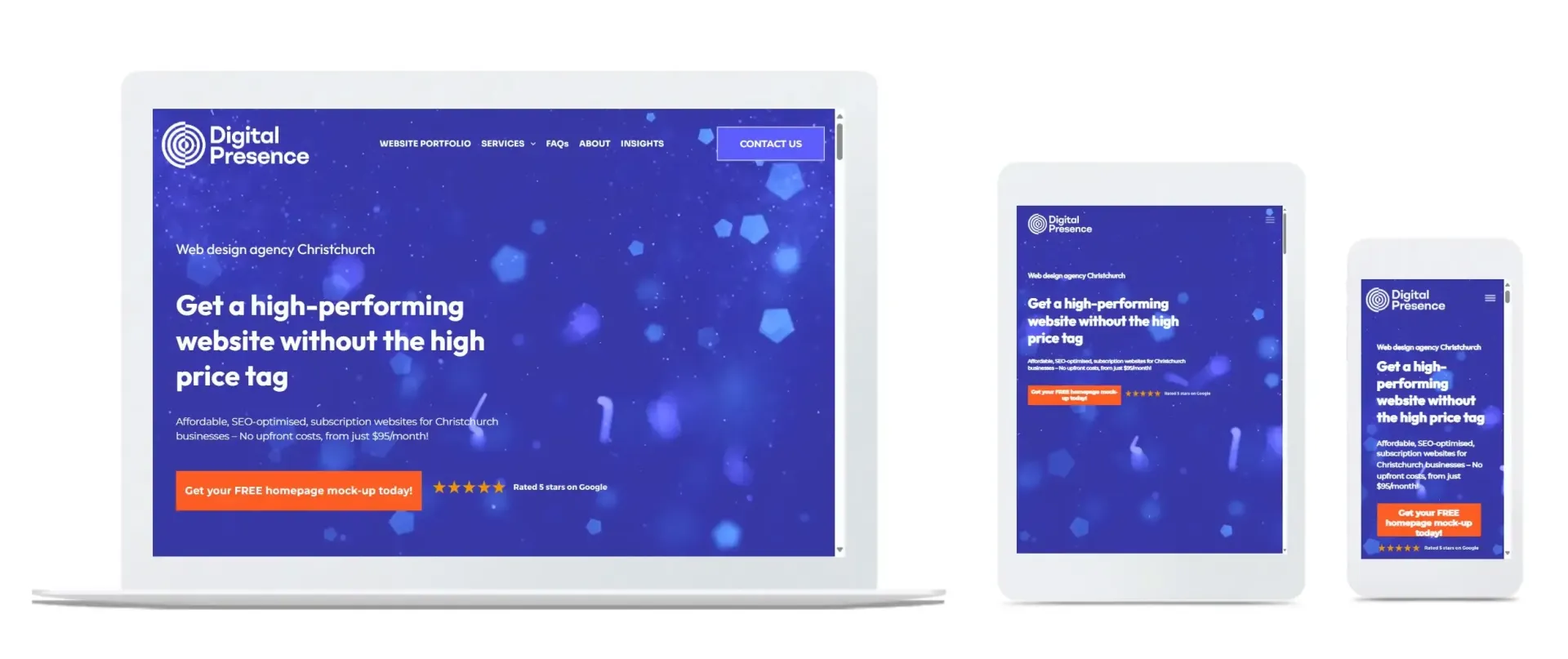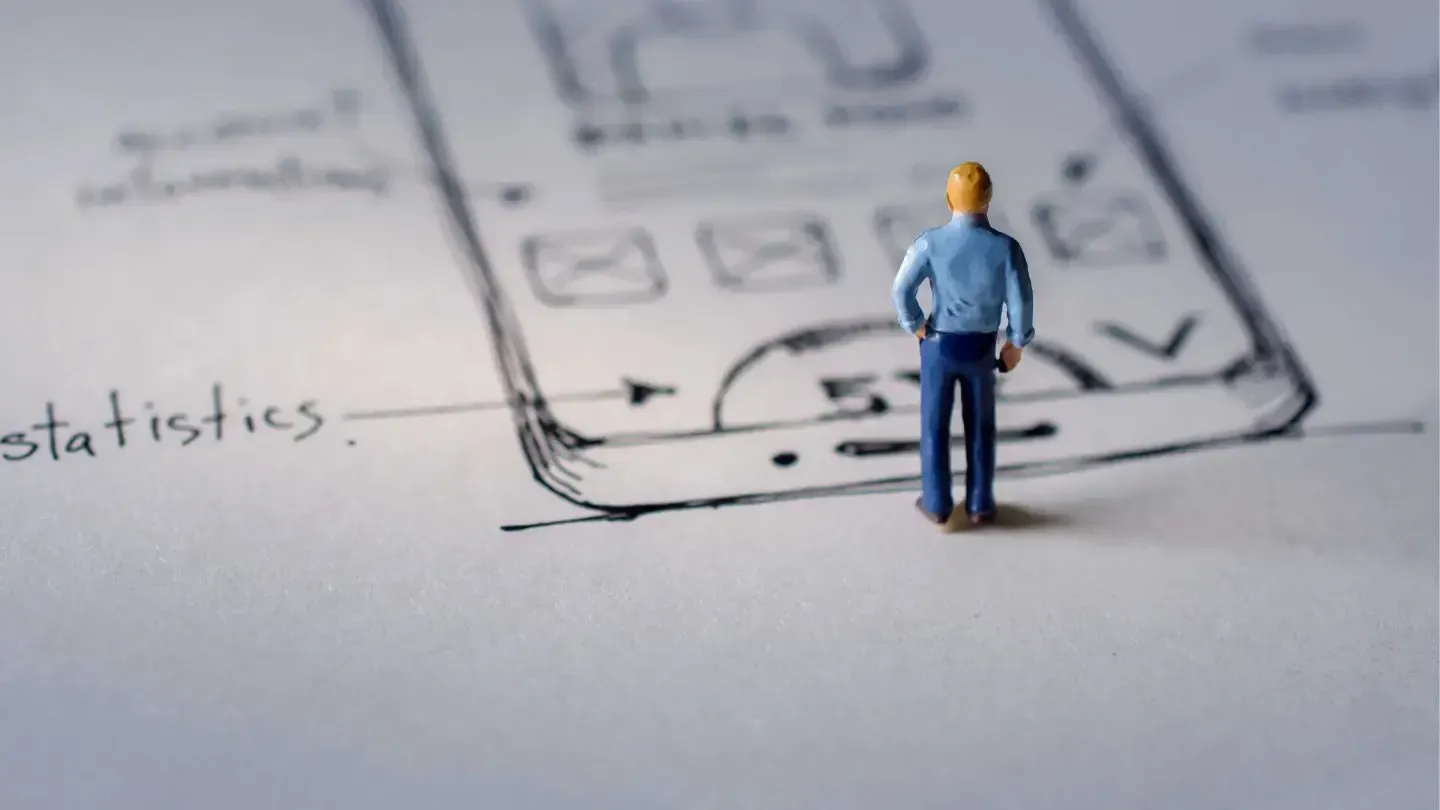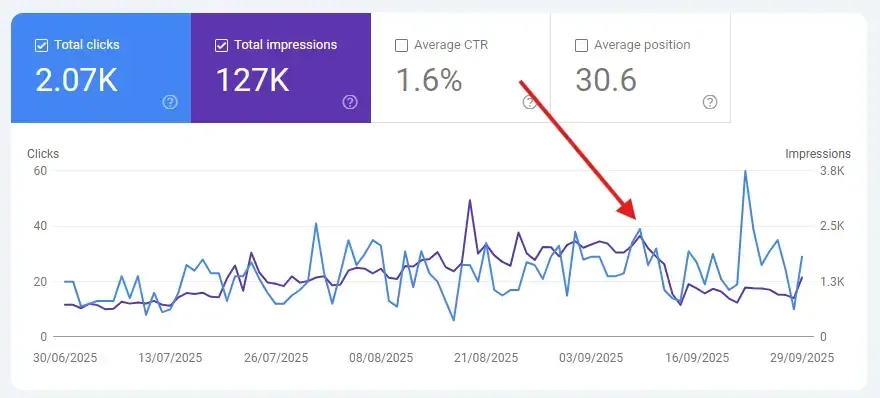Speed vs design: how to balance UX and performance for better rankings
Businesses in Christchurch and across New Zealand face a crucial question when it comes to their websites: should you prioritise speed or design? You want the site to be a masterpiece in terms of technical brilliance to appease the search engines, but you also want a stunning website visitors are happy to use to part with their hard-earned dollars. It’s a dog-eat-dog world in the digital landscape – if you don’t deliver the best website design, your competitor will.
The speed vs design debate has long divided website developers and digital marketers alike. Yet, this doesn’t need to be an either-or decision. For your website to rank well on search engines and convert visitors into loyal customers, you need to achieve the perfect balance of performance and user experience (UX).
At Digital Presence, we’ve seen firsthand how the most successful websites are those that harmonise visual appeal with technical optimisation. When speed and design complement each other, the result is a site that not only looks world-class but also drives measurable business growth.
Why speed matters more than ever
Research consistently shows slow websites cost businesses money. A single second of delay can reduce conversions by up to 7%. With mobile users expecting pages to load in under three seconds, sluggish performance leads to abandoned sessions, abandoned carts, lost sales, and wasted Google Ads marketing spend.
Performance is no longer a ‘nice-to-have.’ Google has made Core Web Vitals, measures of loading speed, interactivity, and visual stability, direct ranking factors. This means a website design that looks stunning but performs poorly may never reach the first page of search results. For companies investing in Google Ads Christchurch campaigns, poor performance also undermines ROI, as visitors click away before the page even loads.
In other words, fast websites don’t just improve user satisfaction; they directly impact your bottom line and your ability to compete in Christchurch SEO rankings.

Why design is equally important
On the other hand, a website that loads instantly but looks dated or confusing doesn’t inspire trust or encourage conversions. Website design Christchurch businesses rely on must go beyond aesthetics; it’s about creating an intuitive, enjoyable, and persuasive user journey.
Key design elements that drive engagement include:
· Visual hierarchy that naturally guides users toward calls-to-action.
· Typography and colour schemes that reinforce your brand identity.
· High-quality, optimised imagery that engages without slowing the site.
· Responsive layouts that adapt seamlessly across devices – no matter what the screen size.
The best web design services in Christchurch understand that design and functionality go hand in hand. Every design decision supporting the business goals of your website, whether that’s generating leads, showcasing services, or converting e-commerce sales.
The false choice between beauty and speed
Business owners often believe they must choose: sacrifice design flair for performance or accept slower sites in exchange for a visually pleasing website. This myth keeps mediocre websites online which is annoying as a user but also holds companies back from achieving their full potential online.
Innovative tools, coding best practices, and hosting solutions mean it’s entirely possible to have both. At Digital Presence, our approach ensures that speed and design aren’t competing priorities but partners in delivering a superior user experience.

How does Digital Presence optimise speed without compromising website design?
Balancing speed with design requires technical expertise and careful planning. Here are some of the strategies Digital Presence implement to transform a site from ‘good enough into a high-performing digital asset.
Image optimisation: using next-gen formats and lazy loading to maintain stunning visuals without slowing down performance. What is lazy loading? Lazy loading is a web performance technique where images are only loaded when they are going to be seen (for example, when scrolling down the screen.
Content Delivery Networks (CDNs): A CDN acts like a global delivery team for your website design. Instead of forcing every visitor, whether they’re in Christchurch, Auckland, or overseas, to load your images, graphics and videos from a single server, a CDN stores copies of your design assets (images, style sheets, videos) on servers all around the world. When someone visits your site, the CDN serves the content from the nearest server location, so even large design files load quickly.
Efficient coding: when a site’s code is clean, streamlined, and free of unnecessary clutter, pages load faster and run more smoothly. This means your animations, layouts, and interactive features work exactly as intended without lag. For businesses, efficient coding ensures your beautiful design isn’t slowed down by behind-the-scenes inefficiencies that frustrate users and harm your SEO rankings.
Browser caching: instead of reloading all the same images, logos, and layouts every time, browser caching saves these elements locally after the first visit. The next time someone comes back, your site appears almost instantly, keeping your design crisp and accessible. This makes browsing smoother, encourages repeat visits, and helps your site feel fast and reliable.
Responsive frameworks: these are the foundations that allow your design to flex and adapt beautifully across any screen size, whether it’s a desktop, tablet, or mobile device. Instead of building separate versions of your website, a responsive framework ensures layouts, images, and menus automatically resize for the best user experience. For businesses, this means your carefully crafted design always looks professional, consistent, and user-friendly, no matter how or where customers access your site.
Hosting optimisation: cheap, overcrowded servers can make even the best designs load slowly or crash during busy periods. With optimised hosting, using dedicated or cloud solutions, your website loads quickly, handles higher traffic, and stays stable so your sleek design and user experience are always delivered at their best, without delays or downtime.
How Digital Presence helps online businesses grow – beauty and brains
Balancing speed, design, and content isn’t a one-time project. It requires continuous monitoring, testing, and refinement. Google’s algorithms change, user expectations evolve, and new technologies emerge. Most business owners don’t have the time or resources to keep up.
That’s why businesses collaborate with a professional digital marketing agency and web designer in Christchurch they trust. Digital Presence doesn’t just build websites, we build digital assets to generate leads, enhance brand credibility, and drive measurable results. Whether you need small business search engine marketing, advanced SEO, or a full digital marketing strategy, we ensure your digital presence works as hard as you do.
To learn more about how you can have a high-performance affordable web design, contact us today for a free, no-obligation, no-jargon chat.
Share












